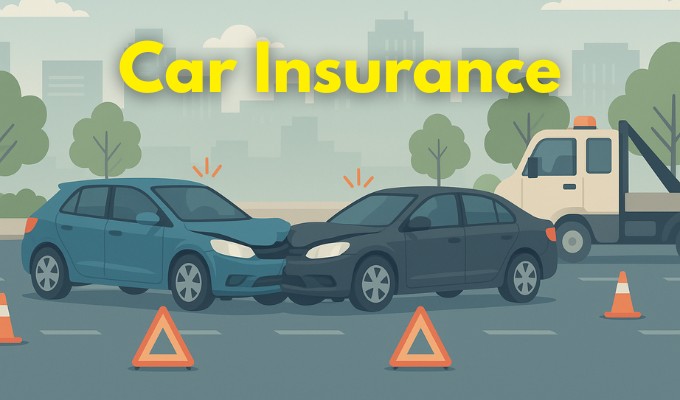Anúncios
Get personalised quotes in minutes from trusted UK providers

See options to compare car insurance quotes in the UK. Explore policies and indicative features before choosing.
This page explains how telematics-based (black box) car insurance commonly operates in the UK. It is not a recommendation to purchase any specific policy.
This short buffer keeps the layout stable between the above‑the‑fold advert and the start of the feed. It adds neutral context without offering recommendations.
How UK car insurance typically works

In the United Kingdom, private motorists generally choose between three broad levels of cover—third
party only, third party, fire and theft, and comprehensive. Although naming may vary by provider,
the core idea is similar: third party policies focus on liabilities to others, whereas comprehensive
typically includes cover for the policyholder’s own vehicle, subject to exclusions, limits, and
excesses. The way quotes are presented can differ by insurer, aggregator, or broker, but most will
request details about the driver, the vehicle, usage patterns, claims history, and where the car is
usually kept. Those inputs shape risk assessment and influence pricing, which is why two drivers can
receive very different quotes for similar vehicles. This page explores common themes people consider
when they black box insurance uk, without recommending any specific brand or policy.
Common factors that influence quotes

Pricing often reflects an insurer’s view of risk. Typical inputs include the driver’s age and
licence history; any motoring convictions; the number of years without a claim; the vehicle’s value,
engine size, fuel type, and security features; the registered keeper’s postcode; anticipated annual
mileage; commuting versus social use; named drivers on the policy; voluntary and compulsory excess;
and any optional add‑ons such as breakdown assistance or courtesy car. None of these items guarantee
a particular outcome and each insurer may place different weight on them. Even the time of year and
market conditions can affect average premiums across the market.
Understanding voluntary and compulsory excess

An excess is the portion of a claim the policyholder pays before the insurer covers the remainder,
up to policy limits. UK policies typically include a compulsory excess set by the insurer, and an
optional voluntary excess chosen by the policyholder. Selecting a higher voluntary excess can reduce
the premium, but it also means paying more out‑of‑pocket if a claim arises. People often weigh the
monthly or annual cost saving against their comfort level with potential claim expenses.
Policy features people often review

Beyond the headline premium, many people glance at features such as windscreen cover, courtesy car
provision during repairs, personal belongings cover, audio and sat‑nav equipment limits, key cover,
legal expenses, and European driving permissions. Terms can vary substantially between policies with
similar naming, so reading the policy schedule, the insurer’s key facts document, and the full terms
is important. Aggregators sometimes summarise features for comparison, but the underlying wording
from the insurer is authoritative.
Steps people commonly take when comparing

Some prefer to begin with a short list of providers or a comparison site to get indicative figures.
The usual sequence is to gather personal and vehicle information, request quotes online, then refine
parameters like mileage or voluntary excess to see how pricing moves. People may save a shortlist
and return later, but quotes are often time‑limited. Those who switch insurers at renewal often do
so after comparing a handful of options rather than dozens, balancing time spent against potential
savings. Others remain with the same provider to keep a no‑claims discount history straightforward,
although most insurers can transfer recognised discounts if documentation is provided.
No‑claims discount (NCD) considerations

A no‑claims discount—or NCD—is a percentage reduction that may increase for each claim‑free year, up
to a cap defined by the insurer. It is not a guarantee of lower pricing, because base premiums can
still change, but it can be influential. Protecting an NCD for an additional fee can help preserve
the discount after certain claims, yet the overall premium might still rise depending on the
incident and risk recalculation. Insurers differ in how they define qualifying years and how they
treat protected discounts after multiple claims.
Telematics and driving behaviour

Telematics—often called black box insurance—uses data about driving behaviour such as acceleration,
braking, cornering, and time of day. Some policies simply require the device to be installed; others
use a smartphone app. The idea is to reward careful driving with lower premiums at renewal, or in
some cases to adjust pricing during the term. However, programmes differ widely, and it is crucial
to understand how data is captured, how it is used, and what rights the driver retains over that
data.
Vehicle choice, modifications, and security

Vehicle selection and any modifications can influence quotes. Powerful engines, rare parts, or
performance modifications can raise premiums, while recognised security features—factory‑fitted
alarms, immobilisers, tracking systems, and safe parking—may help. Informing insurers about
modifications is typically required; non‑disclosure can jeopardise cover. Even changes that seem
cosmetic can matter if they affect value or risk.
Reading documents and keeping records

Before taking out any policy, most people read the insurer’s documentation carefully, noting
exclusions, claims processes, cancellation terms, and administrative fees. Keeping copies of
correspondence, screenshots of quotes, and the final schedule helps if questions arise later. If
something is unclear, asking the provider directly for clarification is sensible.
Managing renewals and mid‑term adjustments

At renewal, policies rarely remain identical in price or terms, even without claims, because market
conditions evolve. Many drivers set a reminder to review quotes a few weeks before renewal to avoid
rushing decisions. During the term, changes such as moving house, altering mileage, or adding a
named driver may require updating the policy; insurers usually provide a method to declare changes,
sometimes with an adjustment fee. Failing to report a material change can invalidate cover.
FAQs
Important reminders
This page is not personalised advice. Insurance is regulated and product terms change. Always verify
details with providers directly, check eligibility and documentation requirements, and consider
professional guidance if unsure.
Additional context: pricing and availability can fluctuate due to market trends, regulatory
developments, inflationary pressures on repair costs, parts supply constraints, and shifting risk
appetites among underwriters. While comparison tools provide a useful overview, the definitive
source for coverage terms remains the insurer’s documentation. Consumers frequently balance the time
invested in comparing multiple quotes against the expected benefit, and may revisit options at
renewal when circumstances have changed.
Disclaimer: General information only, not financial advice. Terms and availability change. Always verify details with providers before making decisions.